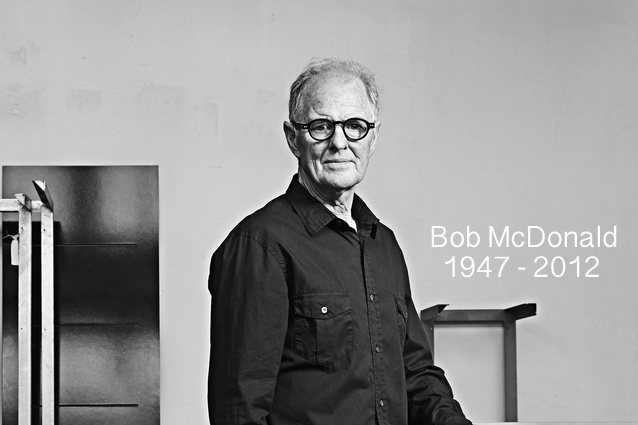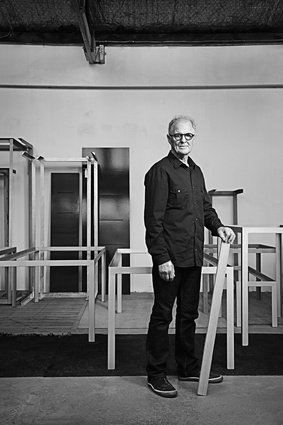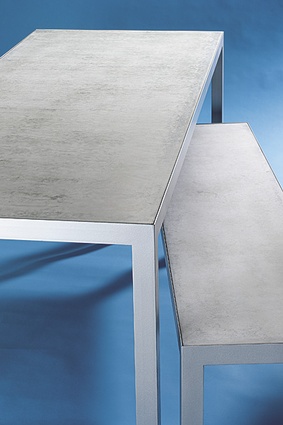The good factor
Furniture designer Bob McDonald has created collections of stylish simplicity that embrace the archetypal New Zealand way of living, Nicole Stock finds.
Urbis: How did you come to furniture design?
Bob McDonald: In the ’60s, I began working for a large furniture factory on Auckland’s North Shore. Their furniture was primarily mainstream; however, they also made a range of mahogany-framed Danish-style design sofas and chairs, and I worked in this area doing light upholstery and semi-skilled work. In those days I wasn’t particularly design aware, but that style of furniture really appealed to what little awareness I had.
About five years later, I teamed up with a brilliant upholsterer and we began manufacturing a small range of contemporary furniture that he designed.
From there I went into retail, managing a furniture/design store in Browns Bay. It was the mid-’70s, early days of Saturday trading, meteoric population growth in the East Coast Bays; the place was booming. The owner of the store also had a factory nearby where he designed and produced contemporary upholstered furniture and was busy to meet the demand.
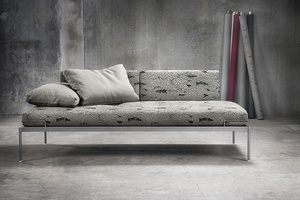
U: What sparked you to design your own pieces?
BM: At this particular time, I was in restaurant work, which allowed time during the day to design. My first solo attempt at a design was a wooden barstool made of rimu and French woven cane. When I gathered the courage, I phoned an Auckland design store. I still remember quite clearly, I had only just stepped inside the door and the manager called out from the other end of the shop: “That is the best looking bar stool I have seen”. She was looking in my direction, I automatically turned and looked behind me to see who she was talking to… but there was no one! My gosh, she was talking about the barstool I had in my hand! That was it; I quit restaurant work and looked for premises.
It was 1980; I became part of a collective of artisans working in a large rundown building in Parnell. There would have been 15 to 20 of us all doing our thing behind makeshift partitioning. Wood dust everywhere. It was a very social and stimulating environment. They were a great bunch of people with an interesting mix of disciplines: boat building, fashion shoes, ceramics, a bit of Memphis design, homewares and various styles of wooden furniture.
In 1985, the collective received notice that the building was to be demolished, making way for apartments. The group split into two and went separate ways. Our group found another large rundown building in Stable Lane just off St Benedicts Street, Newton, and started what became known as the City Workshops.
When the ’87 crash hit, I left furniture to do building work. I enjoyed the building and work was steady but my heart was really in furniture. I could see a gap in my understanding of the design process and this time I wanted to come into it at a more informed level. Therefore, in 1994, I made the huge decision to study and, in my mid-40s, I did a four-year design degree at Unitec.
Although the furniture I’d made previously was well received, I still thought the designs were limited by my lack of design knowledge. However, it was during this study I realised that my designs were actually a legitimate aesthetic and that my sense of design was informed by the furniture I worked with back in the ’60s.
U: Who or what movements have you been inspired by?
BM: My roots are in the ’50s and ’60s era of Scandinavian design, with its pared-down functionalism and refined taste. Shiro Kuramata, is one of my favourite designers. He was big in Japan since the ’60s and became better known internationally in the early ’80s. He managed to combine his cultural approach beautifully with that of the Western world by using slight shifts in proportion, function and balance. His work, at times, also had a lovely hint of humour.
U: Do you have a set of design beliefs that you try to bring into your pieces?
BM: Yes, much the same as we saw going on in furniture and architecture of the ’60s and ’70s: functional structures being reduced to their simplest forms.
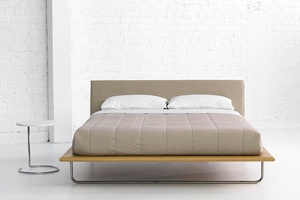
U: Some designers maybe straightjacket themselves in the idea that they need to make everything themselves. You work with a series of manufacturers who do your steel work, your woodwork; do you feel this way of working frees your design up?
BM: Definitely. Subcontracting work out meant I could concentrate more on design issues and what hands-on work I preferred doing. It also meant my designs would not be limited to just my areas of expertise. Even though other people are making the components, I am still very connected to production. I carefully choose people who are specialists. One example is Todd who does most of my steel work; he has had previous experience of making jewellery, so totally gets the importance of the smallest detail.
U: What are some of the biggest challenges facing furniture design?
BM: The population size of New Zealand does create limitations which is an issue we are still having to deal with in terms of sales. While there is a significant interest in contemporary design here, there is still a relatively strong thread of design conservatism; and, of course, many need to buy on price, so thinning the population interested in contemporary design.
U: You have worked in so many different parts of the furniture industry. How have you seen it change over your career?
BM: I feel a significant change occurred in the early 1980s when Humphrey Ikin began exploring Polynesian form in his furniture; his work essentially prompted a wider New Zealand design renaissance. His explorations promoted the idea that the Pacific region not only had an exciting aesthetic of its own, but also had much to offer to design internationally. Other more recent changes are a result of large manufacturing plants moving offshore leaving behind subsidiary firms with sophisticated technologies and processes which then became available to smaller manufacturers.
U: Are you happy to put the New Zealand design label on your work?
BM: Absolutely. Although my work doesn’t necessarily show obvious regionalism, the designs have been hugely informed by the way we live in New Zealand. The outdoor furniture is so simply designed that it is virtually non-intrusive on a view whether it be coastal, rural, alpine, urban or simply the garden and yet is made to withstand the many demands of our harsh environment. New Zealand has a history of small makeshift baches/cribs and sleepouts, but I must have built the last-ever one-bedroomed dwelling on Waiheke as the island gave way to mega holiday homes and gentrification. With only one bedroom, it meant extra sleeping space in the lounge was frequently in short supply. This situation prompted the sofa bed designs.
U: Your products are so simple and clear. Do you keep refining your designs?
BM: Yes, reduce and reduce: paring back making the design crisp, clear and simple. Sometimes refinements may represent only a millimetre or two but that small amount can make a huge difference visually. Simplicity is deceptive and achieving it can be quite complex.

